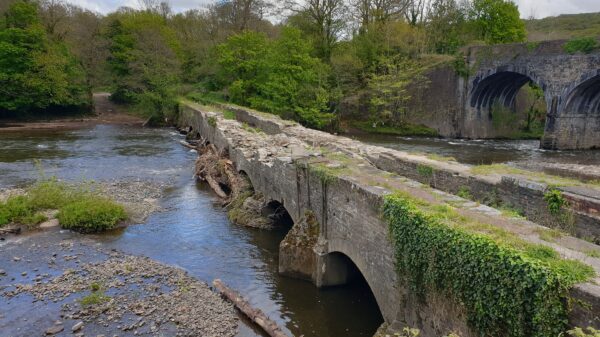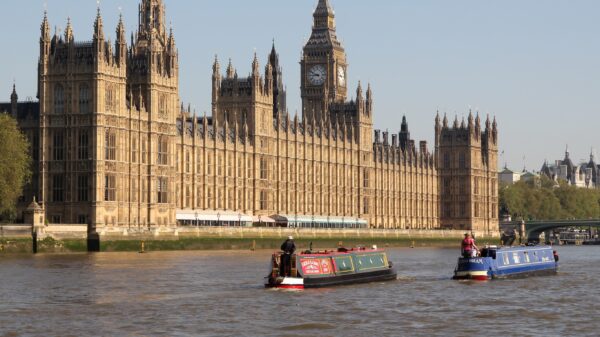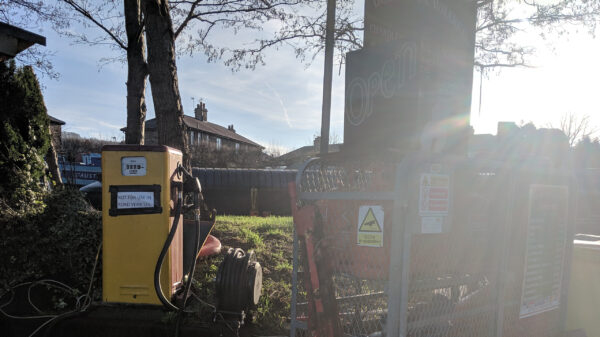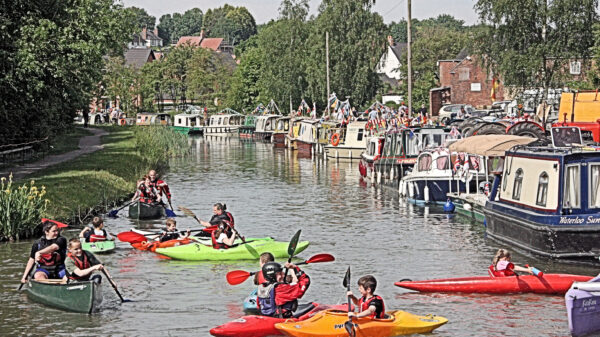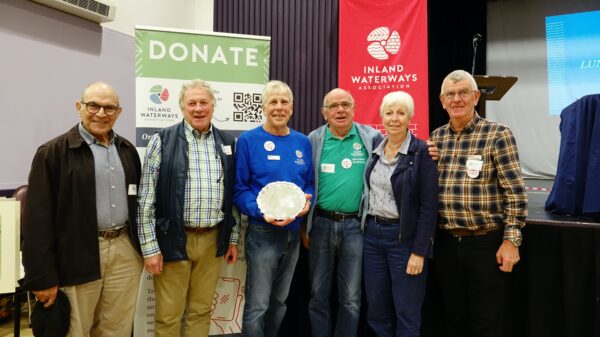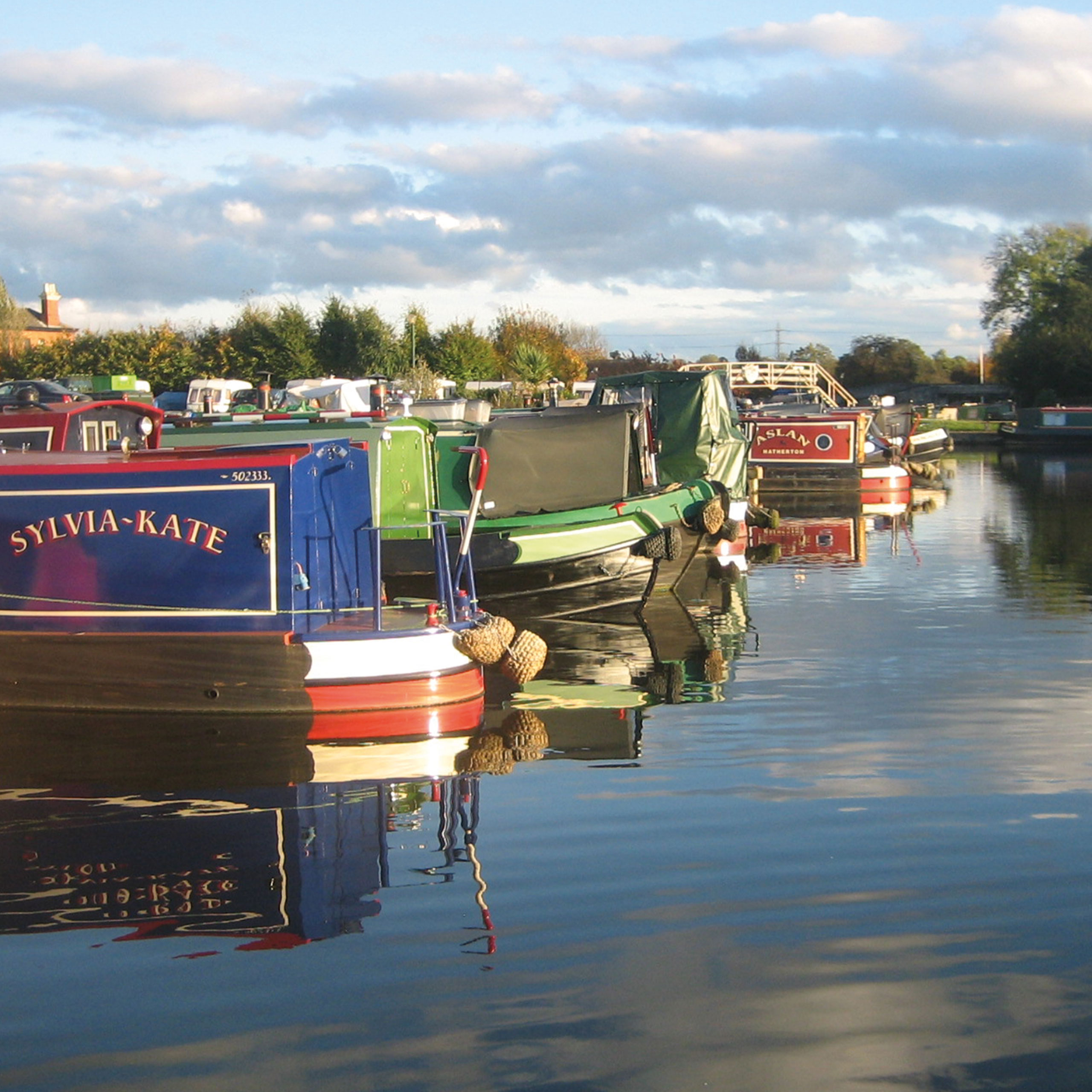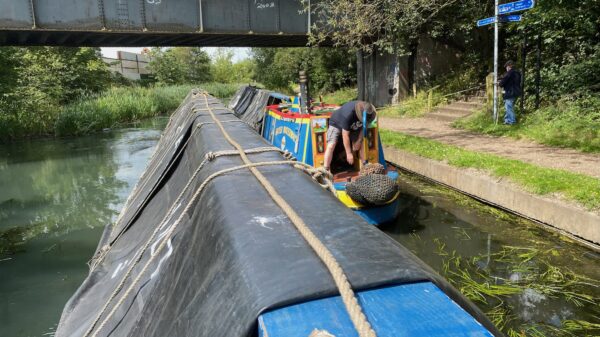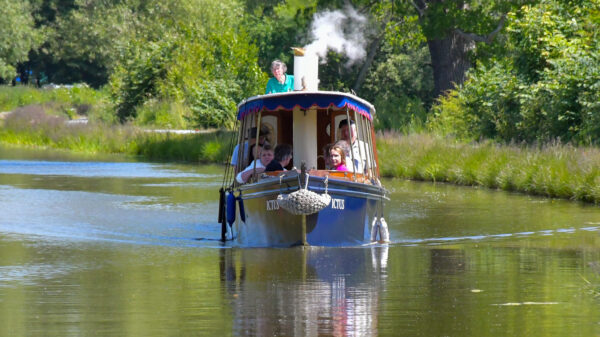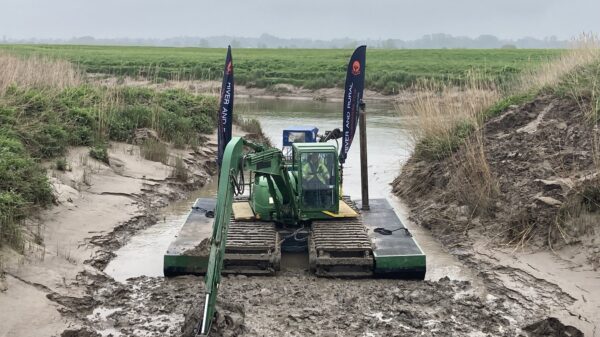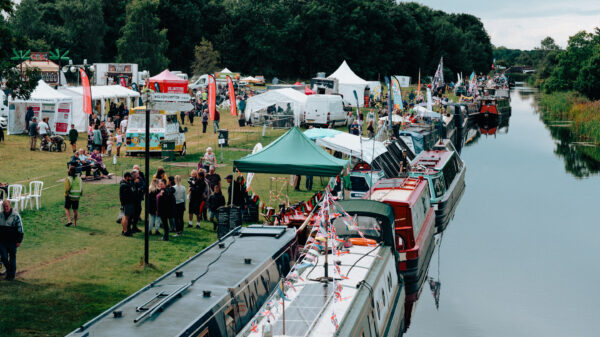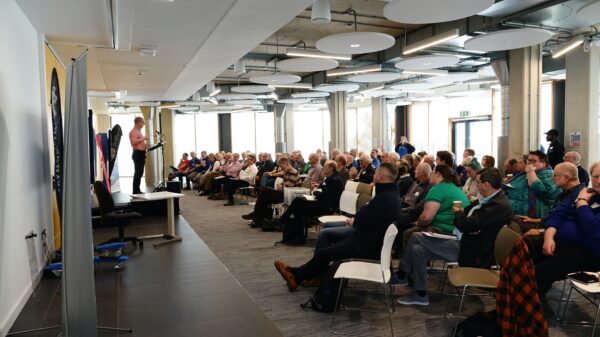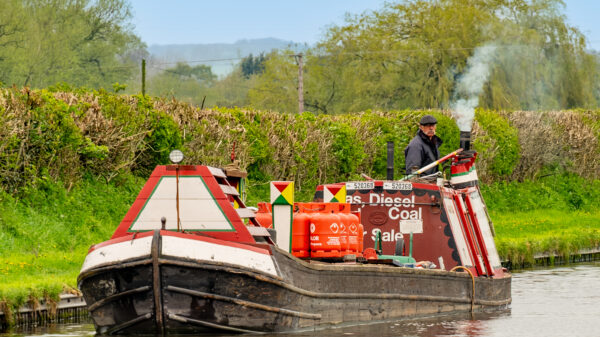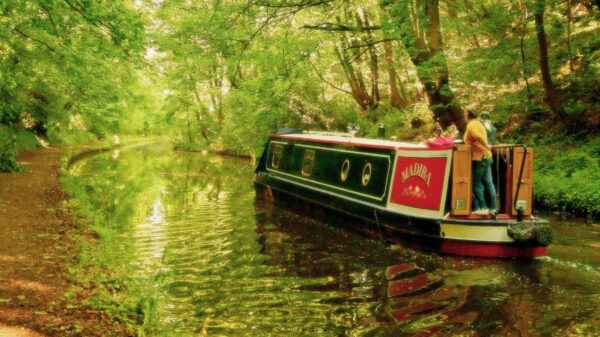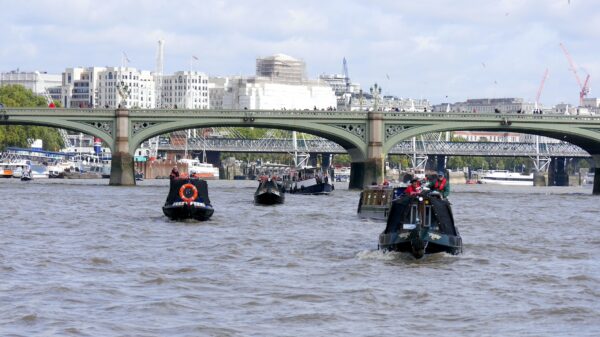1. Livery
Carrying companies had different colour schemes or liveries, which helped with identification from a distance.
Fellows Morton & Clayton’s early livery was black and white with a red dividing line but this changed in 1921 to red, green and yellow.
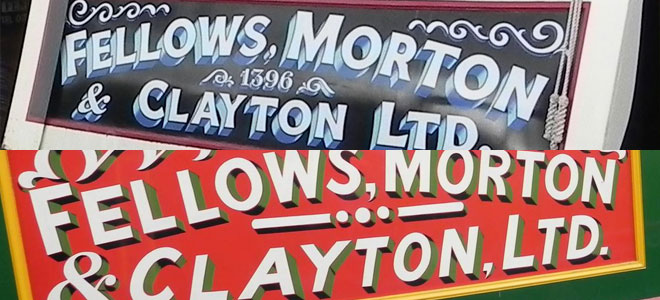
The Grand Union Canal Carrying Company had four liveries, from the two-tone green of the original Grand Union Canal Company subsidiary, Associated Canal Carriers, then two tone blue, then the red, white and blue “coronation” livery to celebrate the coronation of George VI in 1937, and finally a wartime austerity livery with less lettering.
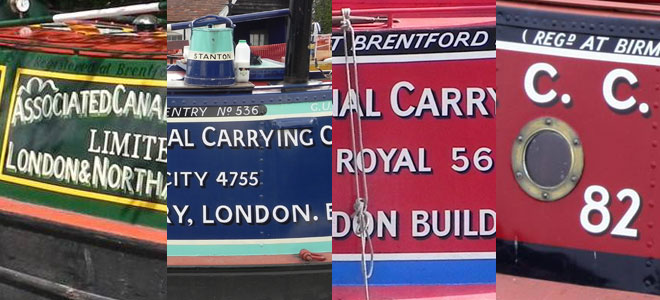
2. Signwriting
Cabin signwriting on working boats tended to include a lot of information, some of which was required by law through the original canal company regulations. As well as the name of the boat and the fleet number, the cabin sides were painted with the company’s name and address, and in later years the telephone number.
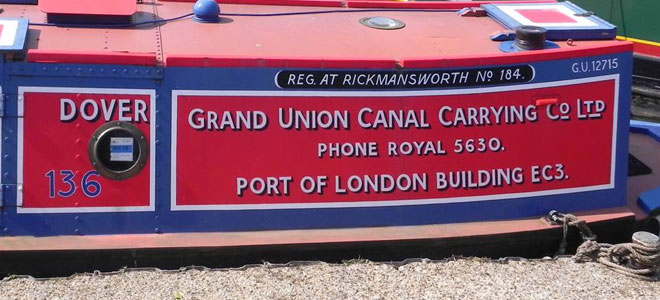 Image: Town Class Motor Dover in full GUCCCo livery and signwriting
Image: Town Class Motor Dover in full GUCCCo livery and signwriting
3. Registration Number
This number painted on the cabins of working boats indicated that the cabin had been registered as fit for habitation by the local authority. The Canal Boat Act of 1877 allowed local authorities to inspect boats and restrict the number of people per cabin, although they weren’t required to do this until the Act was amended in 1884.
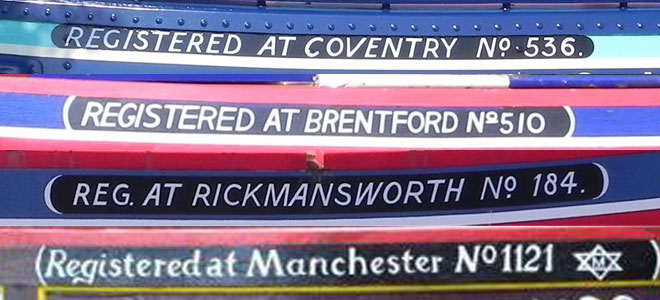
4. Cabin Decoration
It is thought that the families moving aboard (see evolution of the narrow boat) gave rise to the high level of decorative paintwork, brass and furnishings found on the long distance boats.
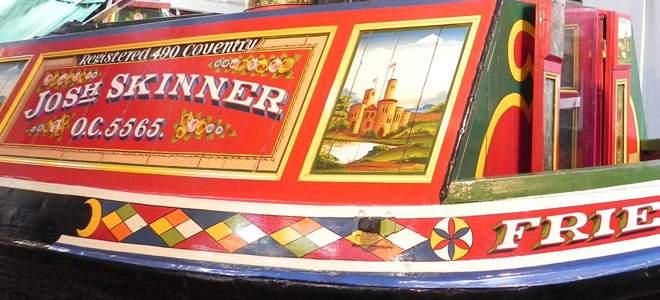 Image: Narrow boat Friendship, now at Ellesmere Port Boat Museum, showing high level of decoration and painting
Image: Narrow boat Friendship, now at Ellesmere Port Boat Museum, showing high level of decoration and painting
5. Rams Heads and Swans Necks
On horseboats and butties, the rudder and tiller arrangement is known as the ‘elum’. The rudder is the large blade (usually wooden, even on a metal butty) that allows the boat to be steered, with a detachable handle (’tiller’) connected to the top of the rudder (called the ‘rams head’). A butty tiller is curved and can be turned the other way up when not in use to allow more room for getting in and out of the cabin. Sometimes a horse’s tail would be hung from the rams head as decoration.
On motor boats a smaller metal rudder is used to direct the wash from the propeller in order to steer the boat, and the tiller is connected to it by a solid ‘Z’ shaped metal bar known as a ‘swans neck’ or ‘swan neck’. The horizontal bar of the tiller used to steer with is often made of brass, is held in place by a ’tiller pin’ and is again detachable to give more space when moored up for getting in and out of the cabin.
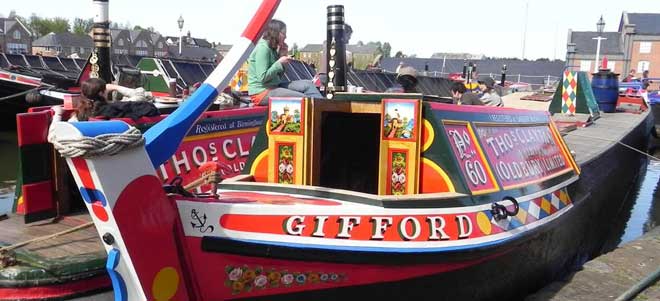 Image: Thomas Clayton’s horse boat Gifford, also at Ellesmere Port, showing tiller in up position
Image: Thomas Clayton’s horse boat Gifford, also at Ellesmere Port, showing tiller in up position
6. Gunwhales and Cants
On working boats, the top of the hull sides were traditionally finished in a solid strip of wood (even on metal boats) known as gunwhales (or gunnels). On many historic boats these days they have been replaced with metal. On motor boat cabins the gunwhales continue around the cabin, to allow access from the back deck to the engine room (also known as the ‘engine ‘ole’) and the back of the hold. Butty cabins don’t have gunwhales, as in the absence of an engine room, there is generally a door giving access into the hold. This gives more width inside the cabin.
‘Cant’ is the term for the continuation of the gunnels around the front or back decks of a narrow boat, again traditionally made out of wood, and therefore easily replaceable following wear and tear, but often these days replaced in metal.
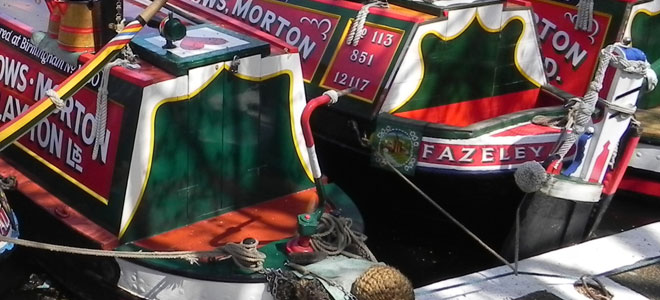 Image: This photo shows the cabin of a motor boat (with gunwhales) and the cabin of a butty (without)
Image: This photo shows the cabin of a motor boat (with gunwhales) and the cabin of a butty (without)
7. Tumblehome
A nautical term originally used to describe the shape of a ship’s hull, in historic narrow boat terms tumblehome refers to the inward slope of a cabin’s profile. This change in dimension across the top of the cabin roof compared to the cabin at gunwhale height is an important feature of modern narrowboat design. Too great a tumblehome will restrict the living space inside, but too little and the cabin is at risk of being damaged on bridges and tunnels.
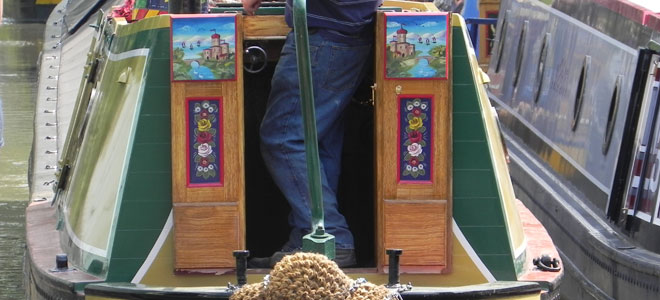 Image: Town Class Motor Whitby showing the tumblehome on the cabin
Image: Town Class Motor Whitby showing the tumblehome on the cabin
8. Pigeon Box
A ‘pigeon box’ is a small raised box on the cabin roof with an opening pitched roof, often incorporating small brass portholes, used for ventilation and letting light into the engine room on a motor boat. Some boats had simpler a simpler ‘flat box’. It is thought that the term ‘pigeon box’ arises from the similarity in shape to baskets used for transporting carrier pigeons.
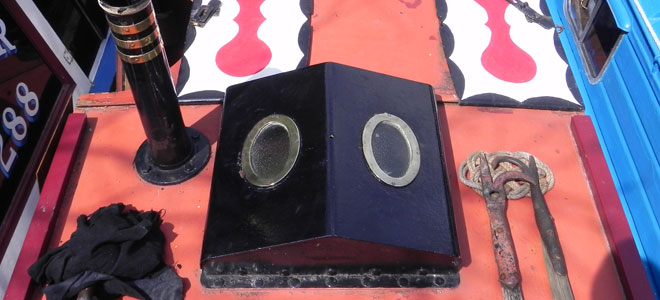 Image: Carrying companies tended to supply flat boxes or plainer pigeon boxes, as shown here. The more decorated pigeon boxes tended to be owned by the boatman himself and would be taken with him if he changed boats.
Image: Carrying companies tended to supply flat boxes or plainer pigeon boxes, as shown here. The more decorated pigeon boxes tended to be owned by the boatman himself and would be taken with him if he changed boats.
9. Inside the Cabin
The term ‘boatman’s cabin’ is a modern one, and it is more traditional to refer to the living cabin as the ‘back cabin’ or simply the ‘cabin’. Over generations since narrow boats were first used on the canals (see evolution of the narrow boat), the most efficient design for a cabin evolved and most back cabins have identical layouts, regardless of what carrying company the boat was built for. On the left (facing forwards) inside the door (to keep the steerer warm on a cold day) is found the cooking range. In front of that is the table cupboard, with a vertical door which can double up as a table when lowered. A drawer below the table is known as the ‘knife drawer’ (and sometimes as the ‘crumb drawer’ due to the crumbs landing in it as the table is put away). In front of that is the ‘bed ‘ole’ with a cross bed that folds out across the width of the cabin. On the right side of the cabin is a simple bench for sitting on, which can also be used as a further bed, and is known as the ‘side bed’.
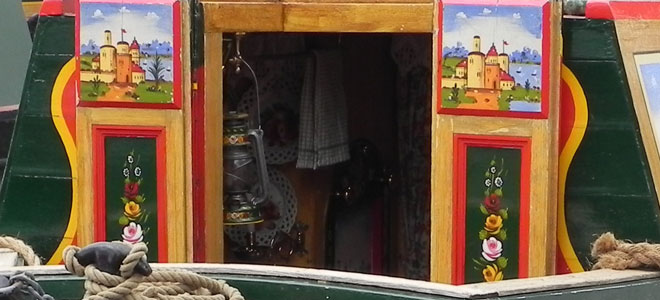 Image: A tantalising glimpse into a back cabin – despite the pride that boatmen felt in the overall appearance of their boats, cabins were always very private places and it was considered rude to look inside someone else’s cabin unless invited.
Image: A tantalising glimpse into a back cabin – despite the pride that boatmen felt in the overall appearance of their boats, cabins were always very private places and it was considered rude to look inside someone else’s cabin unless invited.
10. Water Cans
There is no running water or plumbing in a back cabin, and the water supply lives on the roof in a water can (or two). Many people call these water cans ‘Buckby Cans’ but in fact a ‘Buckby Can’ was specifically a water can that had been bought from Buckby on the Grand Union Canal. Kettles are filled directly from the water can (by taking the kettle out to the water can rather than vice versa). Frequent water points would have been essential in the days before boats had large water tanks, and were often at a lock, so that a water can could be filled while going up or down a lock without wasting any time.
Enamel bowls would have been used for washing people and clothes, along with a ‘dipper’, a shallow basin that could be used for scooping water out of the canal.
Photo: The water supply for the whole family – a system still used today by many owners of unconverted historic boats
11. Mop and Water Can Arrangement
You may have noticed that on working boat back cabins the mop is always in a particular place – leaning up on the water can. This tradition goes back to horseboating days, and relates to how horse boats passed each other without getting the towlines tangled up, given that both horses would be on the same towpath. One towline would be slackened by the horse slowing down, so it passed under the other boat, while the position of the mop helped the first one’s towline ride up over the obstructions on the cabin roof, with the steerer just lifting it over the range chimney once it was in reach.
Image: Mops and water cans at IWA Waterway Festival at Beale Park in 2010
12. Cratch Boards
The ‘cratch’ is the name given to the area at the front of a narrow boat’s hold, protected by a ‘cratch board’ (also known as a ‘deck board’). The shape is triangular with the top of the triangle cut off. Often highly decorated, it supports the top planks and protects the cargo.
Image: A beautifully decorated cratch board on Malcolm Braine’s boat Cactus, painted specially for the Queen’s Diamond Jubilee in 2012
13. Cloths and Planks
Cloths supported by a wooden frame are used over the hold to protect perishable cargoes.
The ‘top planks’ form the top of the tent-shaped arrangement, with diagonal ‘uprights’ spaced along the hold. ‘Stands’ are the vertical supporting posts which are usually decorated, as is the ‘mast’ which is the first upright support for the top planks, which includes on its top a ‘looby’, a spring loaded pin which protrudes above the top planks and is used for towing. At the stern of the hold the top plank rests on a ‘cabin block’ on the cabin roof.
When a boat was empty, or carrying a cargo such as coal that did not require protection from the elements, the top planks would be lowered to gunwhale level, where they would rest on the horizontal ‘beams’. The ‘beams’, usually three down the length of the hold, protect the ‘chains’ which are positioned across the hull and can be used for pulling in the sides to prevent spreading.
Sometimes just side cloths would be used to prevent water splashing in if there was little freeboard.
Image: This photo of Southern Cross at the Braunston Historic Boat Gathering in 2014 shows the cratch and top planks in position at the front of the boat, and the planks lowered along the rest of the hold. Note the smartly painted stands and mast (which consists of the decorated wooden ‘boxmast’ and the metal ‘topmast’ and ‘looby’ above the planks).
14. Uxters!
There are other features to be found on historic narrow boats, and stories behind them, but for now this article will finish with ‘uxters’ or ‘uxter plate’. Uxters is a little known word (which might be useful if playing Scrabble!) used to describe the (usually) concave metal bottom plate below a historic motor boat’s counter stern, immediately in front of the ‘skeg’ (the metal bar that the rudder is attached to and that protects the rudder from hitting obstructions) and behind the ‘swim’ (the deeper part of the hull).
Image: This photo shows Skylark, built by WJ Yarwoods & Sons of Northwich for WH Cowburn & Cowpar Ltd (see Blog 2 in this series) in dry dock for blacking. The photo is looking forwards and shows the rudder, the propeller and the swim (the back of the hold as it narrows towards the back of the boat). The “uxters” is the bottom plate above the propeller.
This is the third feature in our series on historic narrow boats, which includes the evolution of the narrow boat and a historic boat spotting guide.


